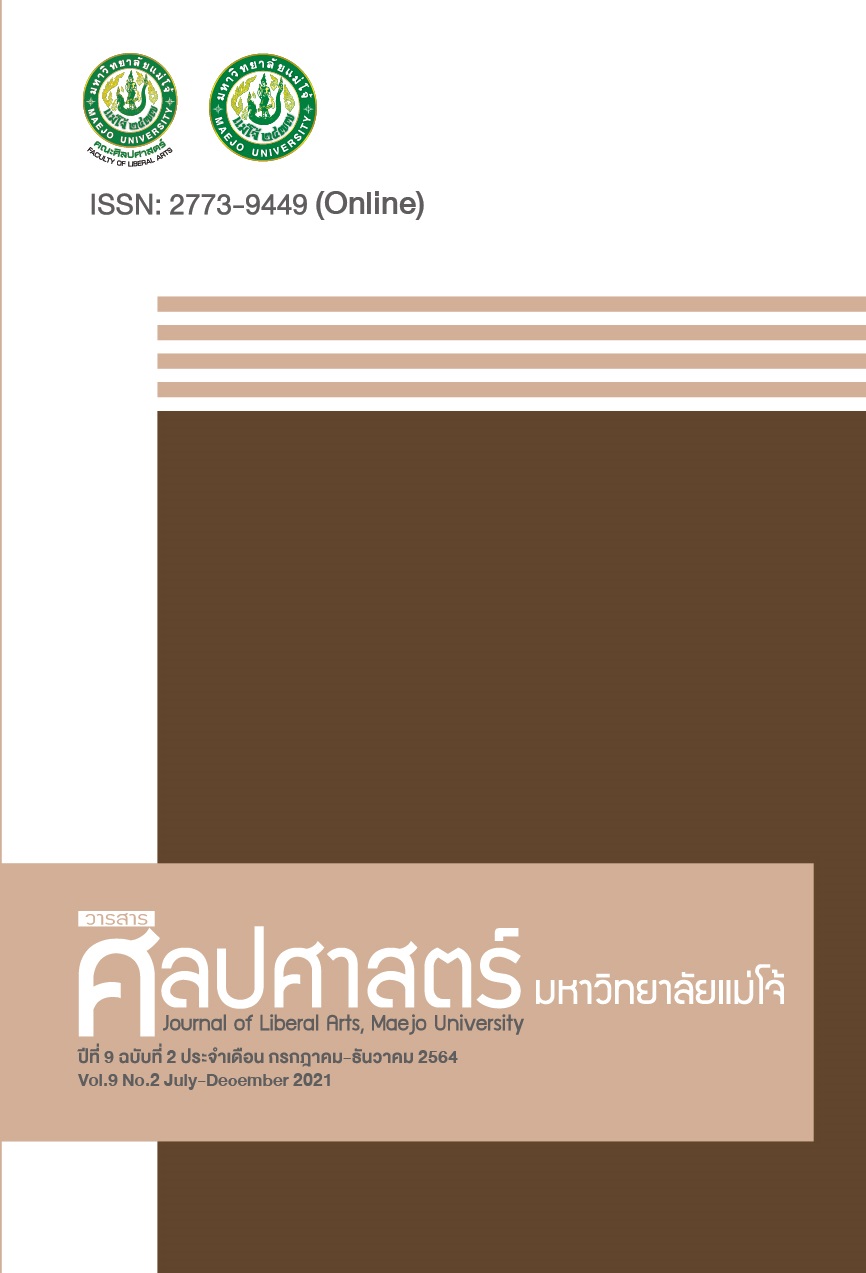ความเปลี่ยนแปลงของสื่อสตรีมมิ่งในอุตสาหกรรมภาพยนตร์ไทย: มุมมองจากกลุ่มผู้สร้าง และผู้มีส่วนเกี่ยวข้อง
Main Article Content
บทคัดย่อ
งานวิจัยนี้มีวัตถุประสงค์เพื่อวิเคราะห์มิติความเปลี่ยนแปลงของสื่อสตรีมมิ่งในอุตสาหกรรมภาพยนตร์ไทยจากทัศนะของกลุ่มผู้สร้างและกลุ่มผู้มีส่วนเกี่ยวข้องในปี 2564 ระเบียบวิธีวิจัยประกอบไปด้วย 1) การวิจัยเอกสาร (Documentary Research) อันได้แก่ การวิเคราะห์กฎหมายและนโยบาย และการวิเคราะห์แบบจำลองห่วงโซ่คุณค่าในกิจการภาพยนตร์ และ 2) การสัมภาษณ์เชิงลึก (In-Depth Interview) ตามลำดับ ผลการศึกษาเผยให้เห็นว่า ได้เกิดความเปลี่ยนแปลงขึ้นกับมาตรฐานการผลิตภาพยนตร์ซึ่งรับอิทธิพลจากประเทศตะวันตก มีการผสานระหว่างความเป็นสากลกับเอกลักษณ์ของความเป็นท้องถิ่น เกิดวิธีคิดแบบผู้ชมเป็นศูนย์กลาง ทำให้มีทั้งการผลิตซ้ำความต้องการเดิม ๆ ของผู้ชมกลุ่มใหญ่ และการสร้างความหลากหลายจากข้อมูลที่ค้นพบจากผู้ชมกลุ่มใหม่ ทั้งนี้ ความเปลี่ยนแปลงจากสื่อสตรีมมิ่งจะทำให้เกิดความต้องการบุคลากรในหน่วยผลิตมากขึ้น ส่วนการจัดฉายจะมีผลกระทบเนื่องจากผู้คนเคยชินกับการรับชมเนื้อหาดั้งเดิมและใหม่ (Original Content) จากช่องทางสตรีมมิ่งแทนที่จะเป็นโรงภาพยนตร์ เมื่อพิจารณาแบบมหภาค ผู้ให้บริการสตรีมมิ่งในระดับนานาชาติ จะส่งอิทธิพลต่อกลุ่มผู้ผลิตและผู้เกี่ยวข้องในไทย โดยฝ่ายไทยต้องปรับวิธีการทำงานและการคิดสร้างสรรค์ให้เข้ากับแนวทางธุรกิจของแพลตฟอร์ม แต่ในขณะเดียวกัน ก็ยังมองได้แบบจุลภาค โดยแพลตฟอร์มระดับสากลมีการปรับตัวให้เข้ากับเงื่อนไขของท้องถิ่น และสอดคล้องกับรสนิยมผู้ชมและเงื่อนไขการทำงานตามแต่วัฒนธรรมด้วย
Article Details
เอกสารอ้างอิง
สราวุฒิ ศรีทองคำ (2559). Video Streaming: บริบทของภาพยนตร์ออนไลน์ในวัฒนธรรม (ดิจิทัล) ศึกษา. สารอาศรมวัฒนธรมวลัยลักษณ์. ปีที่ 16 ฉบับที่ 1 (2559) มกราคม – มิถุนายน. เข้าถึงจาก https://so06.tci-thaijo.org/index.php/cjwu/article/view/95386
National Geographic ฉบับภาษาไทย (2562). Streaming Technology คืออะไร. เข้าถึงจาก https://ngthai.com/science/21986/streaming-technology/. เข้าถึงเมื่อ 15 มีนาคม 2564.
Bloore, P. (2009). Re-defining the Independent Film Value Chain. Discussion document. UK Film Council.
Cambridge Dictionary (2021). Streaming. Access from https://dictionary.cambridge.org/dictionary/english/streaming. 18 March 2021.
Eliashberg, J., Elberse, A. & Leenders, M. (2006). The Motion Picture Industry: Critical Issues in Practice, Current Research, and New Research Directions. Marketing Science. 25. 638-661. 10.1287/mksc.1050.0177.
Hadida, A., Lampel, J., Walls, W. & Joshi, A. (2020). Hollywood studio filmmaking in the age of Netflix: a tale of two institutional logics. Journal of Cultural Economics. 10.1007/s10824-020-09379-z.
Nieborg, D. B., & Poell, T. (2018). The platformization of cultural production: Theorizing the contingent cultural commodity. New media & society, 20(11), 4275-4292. doi:10.1177/1461444818769694
Mirrlees, T. (2013). Global entertainment media: Between cultural imperialism and cultural globalization. New York; London: Routledge.
Porter, M. E. (1985). Competitive Advantage. Ch. 1, pp 11-15. The Free Press. New York.
Robertson, R. (2012). Globalisation or glocalisation? The Journal of International Communication, 18(2), 191-208. doi:10.1080/13216597.2012.709925
Salvador, E., Simon, J. & Benghozi, P.-J. (2019). “Facing disruption: the cinema value chain in the digital age”. International Journal of Arts Management. 22. 25-40.

